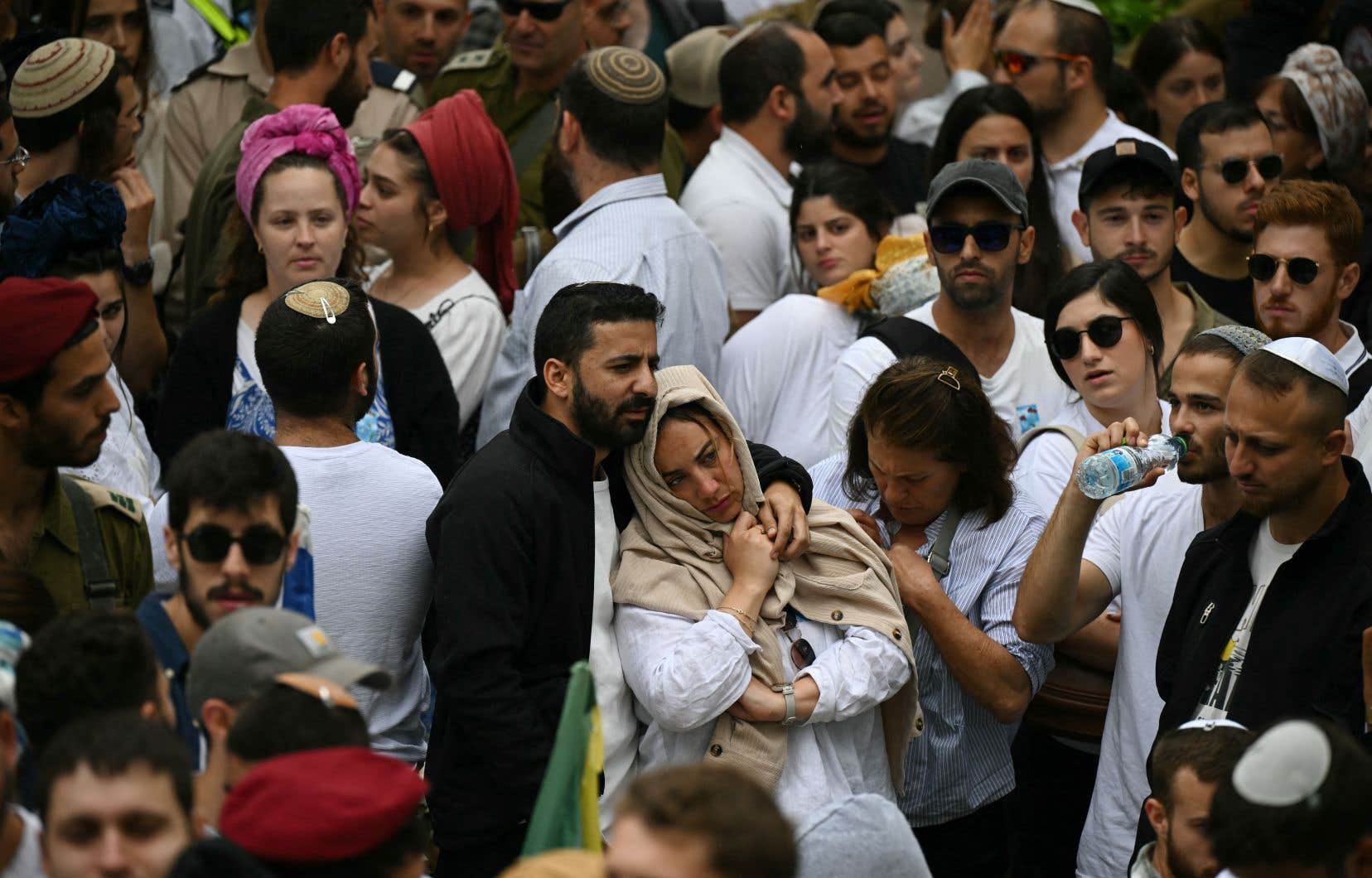In a new square of the Israeli national military cemetery in Jerusalem, the crowd is compact, the emotion general. Red, purple and green berets from various units, relatives and friends pay tribute on Monday to the soldiers who fell in the offensive in the Gaza Strip, a “different” annual day of Remembrance after the October 7 attack.
The other steep paths of the Mount Herzl cemetery, which houses the graves of great national figures such as the father of Zionism Theodore Herzl or Prime Minister Golda Meir, are also crowded.
Some add an intimate touch to the tombs at the base of pine and fig trees. A bouquet with blue petals, a scarf in the colors of a soccer club.
Yom Hazikaron honors soldiers who died in service and victims of attacks in Israel. The national holiday for the proclamation of the State of Israel will follow Monday evening, for 24 hours.
“This year is different”, because 620 soldiers and police officers were killed during and since the attack carried out in Israel by Hamas on October 7, and “because the war is still ongoing” in the Gaza Strip , explains Yeoshoua Shani, 61, in front of the grave of her son Ouri.
This lieutenant from the Golani unit fought on October 7 for “nine hours” on the border with Gaza. He and his men returned safely to their base in Kissoufim, says his father. Half an hour later, a rocket was fired at the base and his son was taken away.
“Even if voices are raised [sur la façon de mener la guerre] and seem to say that we have no unity, unity is there and that gives us hope”, the hope of “destroying Hamas”, despite “the pain” and the mourning, adds his father.
Mermaid
The war began when Hamas commandos infiltrated from Gaza attacked southern Israel on October 7, leading to the death of more than 1,170 people, mostly civilians, according to an AFP report based on official data. More than 250 people were kidnapped during the attack and 128 remain captive in Gaza, 36 of whom are considered dead, according to the army.
The vast operation launched in response by Israel in the Gaza Strip has already left more than 35,000 dead, mostly civilians, according to the Hamas Ministry of Health. And the fighting continues to rage and the bombings continue to shake the narrow strip of land.
For Noa Lev, who lost one of his sons, Hagai, 22 years ago in Rafah, in the south of the Gaza Strip, the current losses in the ranks of the Israeli army rekindle the pain.
It’s “very difficult for us, we have grandchildren and a son-in-law” in the army, including “a grandson in the same unit” as his deceased son, the Givati Brigade.
“He was 24 years old. He was killed during a military mission looking for tunnels” in the Gaza Strip, even then, and “it was much more difficult to find them”.
At 11:00 a.m., the cemetery froze. Like every year, the siren sounds for two minutes. In the sky, fighter planes break the silence to pay tribute to the missing.
The hostages in the lead
At the end of this day, the official ceremony of transition from mourning to Independence festivities, proclaimed on May 14, 1948, exceptionally took place without an audience.
At the same time, two alternative ceremonies took place Monday evening: one in Tel Aviv with thousands of people gathered in the “Hostages Square” in the presence of relatives of people held in Gaza, demanding their release.
The other in Binyamina (north), more political and critical of the government and also counting in its ranks relatives of hostages, where the organizers affirmed “that a normal state cannot celebrate when 132 of its citizens are in captivity”, referring to the 128 hostages of October 7 and the 4 Israelis, held for a longer time in Gaza, including two bodies of soldiers, according to a press release.
“No hostages, no independence,” the participants chanted.
